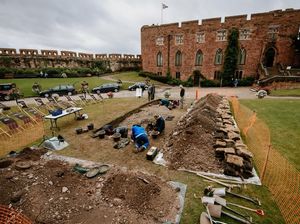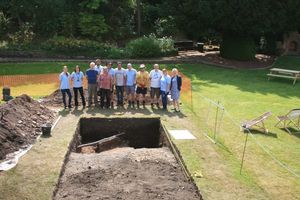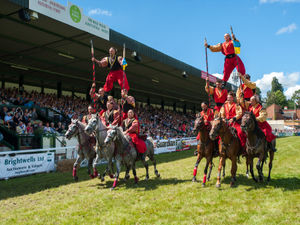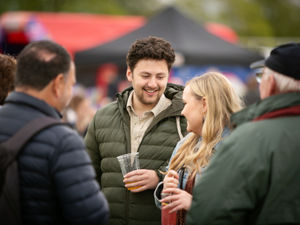Second archaeological dig to take place at Shrewsbury Castle
A second archaeological dig will take place at Shrewsbury Castle next month, it has been announced.

It comes after the first-ever major excavation at the castle last year was hailed a huge success and produced finds of national significance.
This year's dig will build on the success and answer questions that arose from the 2019 project.
The team will excavate a trench on the grassed slope of the western rampart overlooking the drive close to the Great Hall.
The dig will again be led by Dr Nigel Baker and is a partnership project between Shropshire Council, University Centre Shrewsbury, Shropshire Museums and the Castle Studies Trust.
It will take place from September 1 to 18 and will allow for social distancing and other Covid-19 safety measures to be in place to keep the team, staff and visitors safe.
The castle grounds will remain open to visitors to witness history being uncovered and people can ask the team questions from a safe distance.
In 2019, 4,500 people visited the castle and were actively engaged with the dig team.
Dr Baker said: "Last year's dig was a great success revealing the hidden history of the castle that we could only have dreamt of and it gave us the appetite to find out more.
"We’re delighted to be coming back.
“Shrewsbury Castle still remains little explored yet is one of the most historically significant sites in the UK.
"We hope this year's dig will help us further develop our understanding of this Grade I listed Norman site and answer some currently unanswered questions.”

Lezley Picton, Shropshire Council cabinet member for culture, leisure, waste and communications, said: “Last year's excavation, the first ever at Shrewsbury Castle, was a huge success and only served to further the intrigue around the history of the site.
“It was touch and go as to whether Covid-19 would scupper plans for a second dig this year but I’m thrilled that the team are able to safely return.
“I’d like to thank the Castle Studies Trust for providing further funding for the exploration of Shrewsbury Castle."
Professor Tim Jenkins, head of group – arts and humanities – at University Centre Shrewsbury, said: “Dr Capper and I are delighted that University Centre Shrewsbury students are, once again, able to assist in exploring one of the county’s most significant historical landmarks and deepen our understanding of Shrewsbury’s rich and unique architectural unique heritage.”
Jeremy Cunnington, of the Castle Studies Trust, said the trust is "delighted" to support the excavations.
"As one of the most important fortresses in the Welsh Marches as well as the least understood we are really looking forward to seeing what Nigel and his team discover this year," he added.
From cooking pots and glazed jugs to military artefacts and details of the castle’s original defences, last year's excavation produced finds dating from 1100 to the 20th Century
However, two discoveries of national significance were made, rewriting what was known about Shrewsbury Castle.
The first key find was the great defensive ditch that encircled the base of the Norman motte.
The excavation has shown that when a castle was first built by the Normans in or just before 1069, the motte, with its defensive ditch, was enormous.
It would have been about 12 metres wide and the geophysics suggest there was probably a bridge over it.
The second key find was the discovery of two arrow heads or crossbow-bolt heads.
Both were ‘bodkin’ type arrows: sharp, square-edged heavy points designed to pierce armour.




